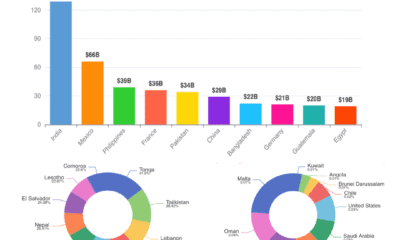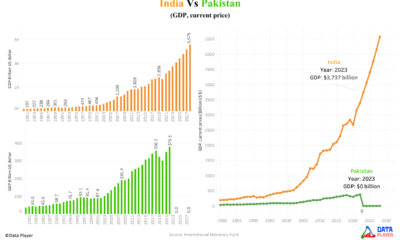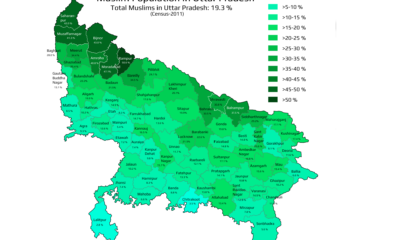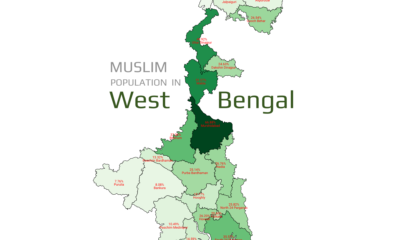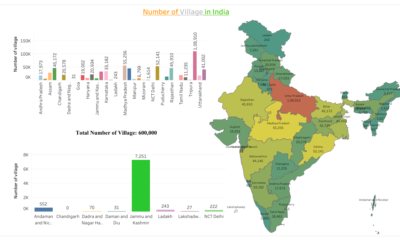Published
6 months agoon
By
MiaKnife crime in Britain is getting worse. More people, especially young people, are being hurt or killed in knife attacks. In 2023, police recorded over 49,000 knife-related offences in England and Wales alone. That number is still rising in 2025. Most of these crimes happen in big cities like London, Manchester, and Birmingham.
Many experts say there are different reasons for this increase—poverty, gang activity, lack of youth support, and fear. Some young people carry knives because they feel unsafe. Others do it to show power or to protect themselves. But carrying a knife often leads to more violence, not safety.
The government and police have started new plans to stop knife crime. These include more searches, school programs, and community projects. But the danger is still growing, and more needs to be done before more lives are lost [1].
Knife Crime Data by Regions in UK and Wales
Where Knife Crime Hits Hardest in the UK: Regional Breakdown
Knife crime is not the same in every part of the UK. Some areas are much more affected than others. New data shows that London has the highest number of serious knife-related offences, with 16,847 cases. This is more than double the number in any other region.
After London, the North West (including cities like Manchester and Liverpool) recorded 6,536 serious knife crimes, and the West Midlands (which includes Birmingham) had 6,409 cases. These regions are also known for higher urban populations and more youth-related violence.
Other areas like the East Midlands, Yorkshire and the Humber, and the South East had moderate levels. Meanwhile, Wales and the North East reported the fewest cases—1,573 and 2,348, showing lower knife crime levels in those regions.
This shows that knife crime is a growing national issue, but some areas are being hit much harder than others [2].
Knife Crime Data by counties in England Wales
Knife Crime Across England and Wales by Counties: Where It’s Rising and Where It’s Low
Knife crime continues to be a serious problem across England and Wales. According to the latest data, West Midlands has the highest number of knife offences at 4,664, followed by Greater Manchester with 3,452, and West Yorkshire with 2,319. These are large urban areas, where violence is often more common.
Some smaller or rural areas show much lower numbers. For example, City of London had just 58 knife crimes, and Dyfed-Powys and Cumbria reported only 170 each. This shows that knife crime is mostly an urban issue.
An interesting fact is that South Yorkshire (1,481) and Avon and Somerset (1,573) are also high, showing rising risks outside the usual hotspots.
If this trend continues, police and local communities may need more support in counties where knife crime is growing. Without stronger prevention, more rural and mid-sized areas could see increases in the future [3].
References
- Office for National Statistics (2023). Crime and Justice – Office for National Statistics. [online] Ons.gov.uk. Available at: https://www.ons.gov.uk/peoplepopulationandcommunity/crimeandjustice
- Office for National Statistics (2023). Crime in England and Wales – Office for National Statistics. [online] www.ons.gov.uk. Available at: https://www.ons.gov.uk/peoplepopulationandcommunity/crimeandjustice/bulletins/crimeinenglandandwales/yearendingdecember2023.
- Ons.gov.uk. (2018). Crime in England and Wales Statistical bulletins – Office for National Statistics. [online] Available at: https://www.ons.gov.uk/peoplepopulationandcommunity/crimeandjustice/bulletins/crimeinenglandandwales/previousReleases
You may like


Top Remittance-Receiving Countries in the World
Religious Demographics of Yorkshire & The Humber by Constituency Area 2021
Religious Demographics of Wales by Constituency Area 2021
Religious Demographics of North West England by Constituency Area 2021


Religious Demographics of Ribble Valley, Lancashire, United Kingdom


Religious Demographics of Pendle, Lancashire, England, United Kingdom

Muslim Population in Goa (2025 Update): District-Wise Data, Percentage & Analysis

Muslim Population in Telangana (2025 Update): District-Wise Data, Percentage & Analysis

Muslim Population in Karnataka (2025 Update): District-Wise Data, Percentage & Analysis

Trump’s 2025 Tariffs on India Explained: Full List, Dates, Products, and 50% Duty Impact

Muslim Population in Odisha (2025 Update): District-Wise Data, Percentage & Analysis

Muslim Population in Goa (2025 Update): District-Wise Data, Percentage & Analysis

Muslim Population in Telangana (2025 Update): District-Wise Data, Percentage & Analysis

Muslim Population in Karnataka (2025 Update): District-Wise Data, Percentage & Analysis
Trending

 Technology2 years ago
Technology2 years agoHighest number of software developers by country in the world 2023 by GitHub | Data Player

 Economy3 years ago
Economy3 years agoWhy Pakistan’s economy is drowning while India’s economy is touching the sky

 Religion1 year ago
Religion1 year agoMapped: What are the muslims population in Uttar Pradesh | State of India

 Demographics1 year ago
Demographics1 year agoMapped: Average Working Hours by European Countries in 2024

 Religion2 years ago
Religion2 years agoWorld’s Largest Religion in 2024 | Data Player

 Religion1 year ago
Religion1 year agoMapped: What is Muslim Population in West Bengal by District wise 2011

 Demographics2 years ago
Demographics2 years agoWhat are the Number of Villages in India by its State and Union Territory

 Demographics3 years ago
Demographics3 years agoMassive population size by Indian states 2023
